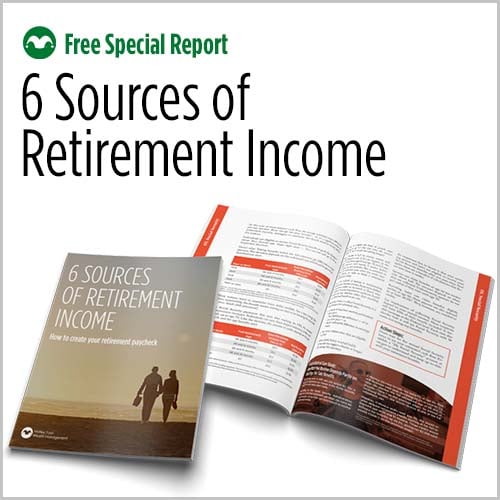

Don’t let your backdoor Roth IRA backfire on you! Make sure you have the correct documents and process in place when it comes time to report your backdoor Roth IRA to the IRS. Here’s what you’ll need, and how to do it.
Published by Motley Fool Wealth Management Originally posted on Wed, Sep 13, 2023 Last updated on August 27, 2024
• Learn about unique investment solutions
• Increase the potential to obtain your financial goals
Roth IRAs are enticing retirement saving vehicles for one main reason: They deliver tax-free retirement income.
Unfortunately for high earners, Roth IRAs are income restricted. The ability to contribute directly to a Roth IRA starts to disappear at modified adjusted gross income (MAGI) levels of $138,000 for single filers and $218,000 for married couples filing jointly in 2023 and goes away entirely for taxpayers with income greater than $153,000 (single) and $228,000 (joint).
In a nutshell, the backdoor Roth IRA takes advantage of two concepts:
A backdoor conversion moves those nondeductible contributions from a traditional IRA to a Roth IRA. The beauty of this process is that by only utilizing nontaxable contributions, the transfer typically can be completely tax-free! This is unlike a regular Roth IRA conversion, which generally results in tax liability. For instance, if you took a deduction when you initially made a traditional IRA contribution, every penny you convert to a Roth IRA is considered taxable income.
Now, just because the backdoor Roth IRA process can be tax-free or low tax in some cases doesn’t mean that it's free from paperwork. So, while a backdoor Roth IRA can be an excellent financial tool for higher-income Americans, it’s important to make sure you document and report the process correctly.
Any contributions made to an IRA–whether traditional, Roth, SEP, or SIMPLE–are typically reported to the IRS on Form 5498 by the broker that holds the account. However, the two advantages that make backdoors attractive also require special reporting. Individuals need to report nondeductible traditional IRA contributions and traditional-to-Roth IRA conversions with their tax return on Form 8606 – Nondeductible IRAs.
Before you can correctly report your backdoor Roth IRA, you’ll need to make sure you receive the correct documentation from your broker. If you complete a backdoor Roth in 2023, there are three documents you should receive in early 2024 to file your tax return:
As mentioned earlier, to correctly report your backdoor Roth IRA, use Form 8606 – Nondeductible IRAs.
First, by reporting the traditional IRA contribution as nontaxable, you’re telling the IRS that the Roth conversion isn’t a taxable event. Note that you still may have to pay some taxes on the conversion if you have other traditional IRA funds from which you did take a deduction, thanks to the IRS’s pro-rata rule. But filling out this form will at least exclude the current year’s nondeductible contribution from taxes.
On that note, be aware that a backdoor Roth might not be the best idea if you already have several other IRA funds. For example, if you already have $95,000 in traditional IRAs and do a backdoor Roth with a $5,000 deposit this year, the IRS will consider 95% of the conversion amount to be taxable, even if you report the $5,000 as a nondeductible IRA contribution. That's the pro-rata rule in action, and if you're worried about how it could affect your tax bill, it's always a smart idea to consult with a tax professional first before any tax decisions.
Second , because you received two Form 5498s, it might look as if you put too much money into IRAs. For example, in 2023, the IRA contribution limit is $6,500 for people under 50, so if you contribute this to a traditional IRA and then convert it to a Roth, it might look like you made a total of $13,000 in IRA contributions. Form 8606 informs the IRS that it was a conversion rather than two different contributions.
It’s important to report your backdoor Roth IRA correctly. Otherwise, the IRS could assume you exceeded your IRA contribution limit for the year, or made contributions to a Roth IRA when you weren’t entitled to do so. Or the “distribution” from your traditional IRA that was reported on the 1099-R could trigger an early withdrawal penalty notice. And while some of these mistakes possibly could be cleared up after the fact, getting your tax documentation right the first time could make your life far easier!
Schedule a 30-minute call with one of our Wealth Advisors and get a financial roadmap at no cost or obligation.
Schedule a Call


Join the thousands of readers getting stories like this delivered straight to their inbox every Thursday — for free. Give it a spin, enter your email to sign up.

Let's see what we'd recommend for you. Create your Investor Profile online right now — for free. It's secure and only takes 10 minutes.

Schedule a 30-minute call with one of our Wealth Advisors and get a financial roadmap at no cost or obligation.

6 Sources of Retirement Income: Must-read tips and tricks we believe all retirees should know. Download your copy today – for free.

Roth IRAs are a favorite among retirement savers who want predictable retirement income. While.

"I want to avoid paying taxes, so I'm going to move all my IRA money into a Roth IRA.” Does this.

What can you do with your required minimum distribution (RMD) if you don’t need (all of) it? That.
This information is provided for informational purposes only, reflects our general views on investing and should not be relied upon as recommendations or financial planning advice. We encourage you to seek personalized advice from qualified professionals, including (without limitation) tax professionals, regarding all personal finance issues. While we can counsel on tax efficiency and general tax considerations, Motley Fool Wealth Management does not (and is not permitted to) provide tax or legal advice. Clients who need such advice should consult tax and legal professionals. This information may not be relied upon as personalized financial planning or tax advice.
The information contained herein is believed to be accurate and derived from sources believed to be reliable as of the post’s publication date. Any weblinks provided to other parts of our website or third-party websites are believed to be accurate and reliable as of this post’s publication date. No representation or warranty is made as to the blog post’s continued accuracy after the publication date, and MFWM does not undertake any duty to update the information presented or hyperlinked herein. The post may also contain the opinions of MFWM as of the publication date and such opinions are subject to change without notice, and such changes may be significant. There can be no assurance that such opinions were, are or will remain accurate, or that other opinions or methodologies would not produce different results.
Motley Fool Wealth Management is an SEC registered investment advisor with a fiduciary duty that requires it to act in the best interests of clients and to place the interests of clients before its own. HOWEVER, REGISTRATION AS AN INVESTMENT ADVISOR DOES NOT IMPLY ANY LEVEL OF SKILL OR TRAINING. Access to Motley Fool Wealth Management is only available to clients pursuant to an Investment Advisory Agreement and acceptance of Motley Fool Wealth Management's Client Relationship Summary (PDF) and Brochure (Form ADV, Parts 2A and 2B). You are encouraged to read these documents carefully. All investments involve risk and may lose money. Motley Fool Wealth Management does not guarantee the results of any of its advice or account management. Clients should be aware that their individual account results may not exactly match the performance of any of our Model Portfolios. Past performance is no guarantee of future results. Each Personal Portfolio is subject to an account minimum, which varies based on the strategies included in the portfolio. Motley Fool Wealth Management retains the right to revise or modify portfolios and strategies if it believes such modifications would be in the best interests of its clients.
During discussions with our Certified Financial Planners, they may provide advice with respect to 401(k) and IRA rollovers into accounts that are managed by Motley Fool Wealth Management. Such recommendations pose potential conflicts of interest in that rolling retirement savings into a MFWM managed account will generate ongoing asset-based fees for Motley Fool Wealth Management that it would not otherwise receive.
Motley Fool Wealth Management, an affiliate of The Motley Fool, LLC (“TMF”), is a separate legal entity, and all financial planning advice and discretionary asset management services for our clients are made independently by the financial planners and asset managers at Motley Fool Wealth Management. No TMF analysts are involved in the investment decision making or daily operations of MFWM. Motley Fool Wealth Management does not attempt to track any TMF services.